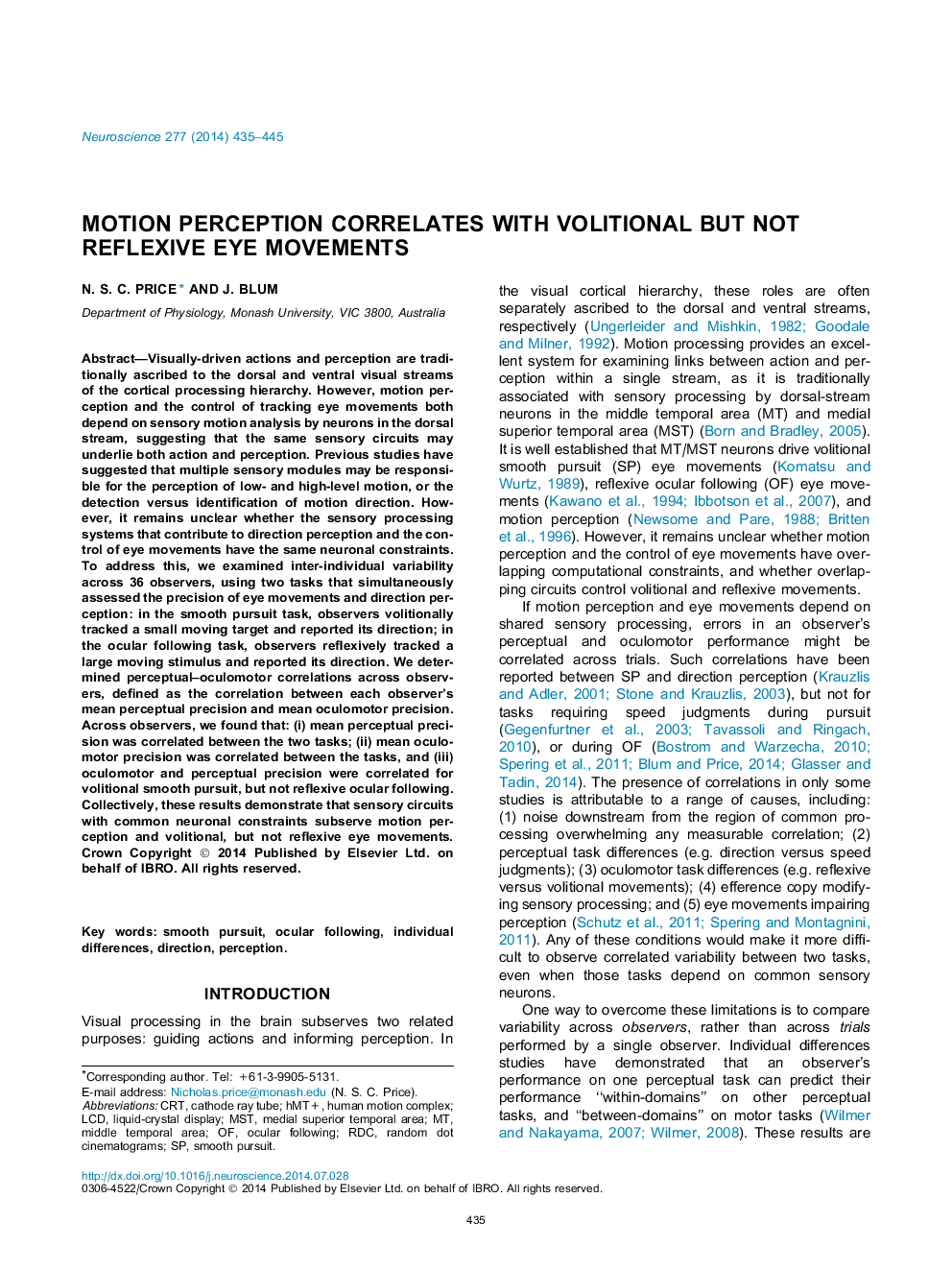| Article ID | Journal | Published Year | Pages | File Type |
|---|---|---|---|---|
| 6273621 | Neuroscience | 2014 | 11 Pages |
Abstract
Visually-driven actions and perception are traditionally ascribed to the dorsal and ventral visual streams of the cortical processing hierarchy. However, motion perception and the control of tracking eye movements both depend on sensory motion analysis by neurons in the dorsal stream, suggesting that the same sensory circuits may underlie both action and perception. Previous studies have suggested that multiple sensory modules may be responsible for the perception of low- and high-level motion, or the detection versus identification of motion direction. However, it remains unclear whether the sensory processing systems that contribute to direction perception and the control of eye movements have the same neuronal constraints. To address this, we examined inter-individual variability across 36 observers, using two tasks that simultaneously assessed the precision of eye movements and direction perception: in the smooth pursuit task, observers volitionally tracked a small moving target and reported its direction; in the ocular following task, observers reflexively tracked a large moving stimulus and reported its direction. We determined perceptual-oculomotor correlations across observers, defined as the correlation between each observer's mean perceptual precision and mean oculomotor precision. Across observers, we found that: (i) mean perceptual precision was correlated between the two tasks; (ii) mean oculomotor precision was correlated between the tasks, and (iii) oculomotor and perceptual precision were correlated for volitional smooth pursuit, but not reflexive ocular following. Collectively, these results demonstrate that sensory circuits with common neuronal constraints subserve motion perception and volitional, but not reflexive eye movements.
Keywords
Related Topics
Life Sciences
Neuroscience
Neuroscience (General)
Authors
N.S.C. Price, J. Blum,
